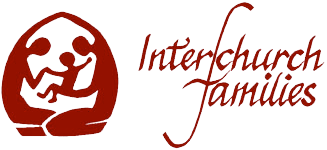Background to the Rome paper
11th International Conference
Newcastle, NSW, Australia
18-21 August 2005
Ruth Reardon
The roots of this paper are to be found right back in the 1960’s, with the calling together of the Second Vatican Council by Pope John XXIII. It was then that groups of interchurch families (mixed marriages as they were then called) began to meet, first in France around the Centre St Irenée at Lyon, then in French-speaking Switzerland, then in Italy. In England we date the interchurch family movement from 1968, when the first national conference was held, and we first coined the name: interchurch marriages. Germany had its own home-grown activity early on, as did Austria, and from England the movement gradually spread to other parts of the English-speaking world. There was a strong element of a self-help movement in the early groups, and indeed that continues, but the groups that lasted did so because they were not just concerned with the good of interchurch families themselves, but with the contribution they could make to Christian unity. Hence the title of the Rome paper – Interchurch Families and Christian Unity – with its sub-title which was that of the Rome Gathering itself: Interchurch Families: United in baptism and marriage; called to a common life in the Church for the reconciliation of our churches. The first sentence of the Introduction to the Rome paper sets it out boldly: ‘We believe that, as interchurch families, we have a significant and unique contribution to make to our churches’ growth in visible Christian unity.’ That is our calling, our vocation, as interchurch families.
The first English-speaking international conference was held in England in 1980 (an Australian couple participated). After that, such conferences were held every two years in different parts of the British Isles, until we went to the United States in 1996. It was not until 1998 that the first bi-lingual (French/English) World Gathering was held in Geneva, meeting in the headquarters building of the World Council of Churches. This was largely organised by the French and Swiss foyers mixtes. The Second World Gathering, which took place near Rome in 2003 and adopted this Rome paper, was far more ambitious. It was prepared by an international group representing English-speaking, French-speaking, German-speaking and Italian-speaking interchurch families, and the Gathering itself worked in the four languages. It took an enormous amount of energy and commitment actually to achieve such a Gathering.
The original proposal for the Rome paper came from Martin Reardon. He put it to the first meeting of the Preproma group held in July 2001 in the Torre Pellice region of northern Italy, a Waldensian centre, where Franco-Italian interchurch family groups had met every few years since the late-1960’s. Martin had retired from being General Secretary of Churches Together in England, and before that he was General Secretary of the Board for Mission and Unity of the Church of England. In retirement was able to devote a lot of time and attention to the interchurch family movement. He was one of the founder-members of the British AIF in 1968, when he was Secretary of the Sheffield Council of Churches. Thirty years later when he retired he had all the know-how gained from long experience of working in the ecumenical movement not only at the local, but also at national and international levels. He knew that you don’t get any outcome from international gatherings unless you put a lot of preparation into thinking about what you want to come out of them.
The original idea was that we should present our paper to the Pontifical Council for Promoting Christian Unity beforehand, that they should respond, and that we would have a chance of discussion with them about how things could be taken forward. We have always found the Secretariat for Promoting Christian Unity, later the Pontifical Council, very helpful in trying to understand the aspirations of interchurch families, and to be as sensitive to our pastoral needs as they could be. We had been very grateful for what had been done for us in the 1993 Ecumenical Directory issued by the Pontifical Council.
But in hoping for a response beforehand and further discussion at Rome we had underestimated the difficulties. Mixed marriages had become a really hot potato for the Pontifical Council, linked as they are with the huge ecclesiological issues that face the ecumenical movement, questions that underlie the debates about intercommunion and eucharistic sharing. In particular the sense that some interchurch families have of ‘double belonging’ – of sharing as a couple in the life of both the church communities of the partners – has been perceived by many as a threat, even as a threat to the integrity of the ecumenical movement. Inevitably we had our disappointments and problems along the way. We had expected that the WCC/RCC Joint Working Group would have been represented at the Rome Gathering. It has had the ecclesiological significance of interchurch families on its agenda in the period between the Eighth Assembly of the World Council at Harare in 1998 and the ninth at Porto Alegre next February. At a late stage they had to pull out saying that this would go beyond their remit. From the beginning of our planning we had known that Cardinal Kasper, President of the Pontifical Council, would not be in Rome at the time of our Gathering, as he was already committed to a Lutheran world assembly. We had hoped however for the presence of the Council’s Secretary, Bishop Marc Ouellet, who had been present at the English-speaking Interchurch Families International Conference in Canada in 2001, and from whom we felt we had received a good hearing. We were therefore very sorry (from our own point of view) when he was taken off to become the Cardinal Archbishop of Quebec.
However, in the end we were very grateful that Bishop Eleuterio Fortino, Under-Secretary of the Pontifical Council, who has from early days been very involved in the Pontifical Council’s concern for mixed marriages, came to the Gathering to read to us a very important message from Cardinal Kasper. This was a partial response to the Rome paper. It not only strongly affirmed interchurch families but also opened the way to further contacts between interchurch family groups and the Pontifical Council. That is what we are taking up in the planned informal conversations between representatives of interchurch families from different parts of the world and some of the staff of the Pontifical Council in October. And although the Rome paper did not fulfil its original intention, we have the benefit that it was formally adopted by the Rome Gathering, which gives it a status unparalleled as a consensus document published in the name of interchurch families world-wide.
Returning to the first Preproma meeting in 2001, Martin’s suggestion of a preparatory paper was agreed, and a Theological Preparatory Group was set up to work on it, distinct from but answerable to, the main Preproma committee. The time-table was tight. Martin was responsible for the original outline, with its three sections (How interchurch families see themselves; The contribution of interchurch families to Christian unity; Pastoral Care and Understanding). This was very quickly agreed. He was also responsible for drafting the paper, and for incorporating all the suggestions made from around the world – which were many. Thus the original text was drafted in English, but translators worked hard to cope with turning the various drafts into French, German and Italian. This was all done by email or on paper, until a final meeting of the group was held in Zurich in the autumn of 2002 (only the Europeans!). The text was eventually agreed by everyone, and was ready in late 2002 to be sent to the Pontifical Council and to other world bodies that were considering interchurch families, such as the International Anglican-Roman Catholic Commission for Unity and Mission (IARCCUM) which was represented at the Rome Gathering. Also, it was published in interchurch family journals and more widely.
The intention of this text was to address all the churches, but particularly the Roman Catholic Church (we had intentionally gone to Rome!), to share the experience of interchurch family groupings over four decades, and to express our aspirations and hopes. Basically it keeps within the current guidelines of the Roman Catholic Church, concerned with what seems to us to be possible now, if they are wisely applied.
The first section is about our self-understanding. There is a problem here. Who are we really talking about? In earlier days we distinguished between ‘interchurch marriages’ and those that are merely ‘mixed’ – where one or both partners do not practise their faith. But you cannot draw a clear dividing line, and the ‘mixed’ are potentially ‘interchurch’. The 1993 Directory speaks of those who ‘share the sacraments of baptism and marriage’; that gives us a good theological and ecclesiological grounding, but as we know in practice, not all the baptised are to be found in church on Sundays. We are talking about partners who live fully their baptismal faith within their own traditions, but who because of their marriage commitment also live, worship and participate in their spouse’s church, as far as they can. Back in 1970 the papal motu proprio that transformed the situation of interchurch families by removing the requirement that both partners promise to bring up their children as Catholics, said: ‘Mixed marriages do not, except in some cases, help in re-establishing unity among Christians.’ Our intention is to be those ‘exceptional cases’ who do contribute to unity. We introduce in this section the term ‘double belonging’ simply because we have not yet found any other that describes so well our lived experience. We are not asking for it to be generally accepted, just using it as a descriptive term to say who we think we are and how we feel we live in a privileged ecumenical situation. The experienced ‘double belonging’ of some interchurch family children, of course, goes well beyond that of their parents.
The second main section of the paper focuses on the contribution that interchurch families are making, and would like to make, to Christian unity. Perhaps the most important point here is the conviction that the process of growing together as a married couple is the same process by which the churches themselves can grow into unity. You need the right conditions to foster an ever-deepening relationship – like living together and sharing everything – and you need to cultivate the attitudes of love and forgiveness, mutual respect and understanding. It’s the same process, but of course it’s easier on the smaller level. Amazing things can happen. An interchurch family celebrations ‘can’ (I quote) ‘be a catalyst that moves others to see the importance and the joy of Christian unity. It can happen at their wedding, at a baptism or dedication of a child, a first communion, a young person’s confirmation or profession of faith, a wedding anniversary, a funeral.’
The third section on the pastoral care and understanding that interchurch families would like to receive is of course to help them to build up their own marriages and family life. But it is also needed to help them to fulfil their potential for promoting Christian unity. We have our horror stories, but we also have a great deal of experience of good pastoral practice in different parts of the world – not least in Australia! – and good practice should be shared. Too often we have to keep quiet about it, because it is going faster forward in some places than is acceptable in others. But it is our great desire and calling, as the Rome paper’s Conclusion says, ‘to witness by our lives, our actions and our words to the fundamental and growing unity of all Christian people’.
Ruth Reardon

